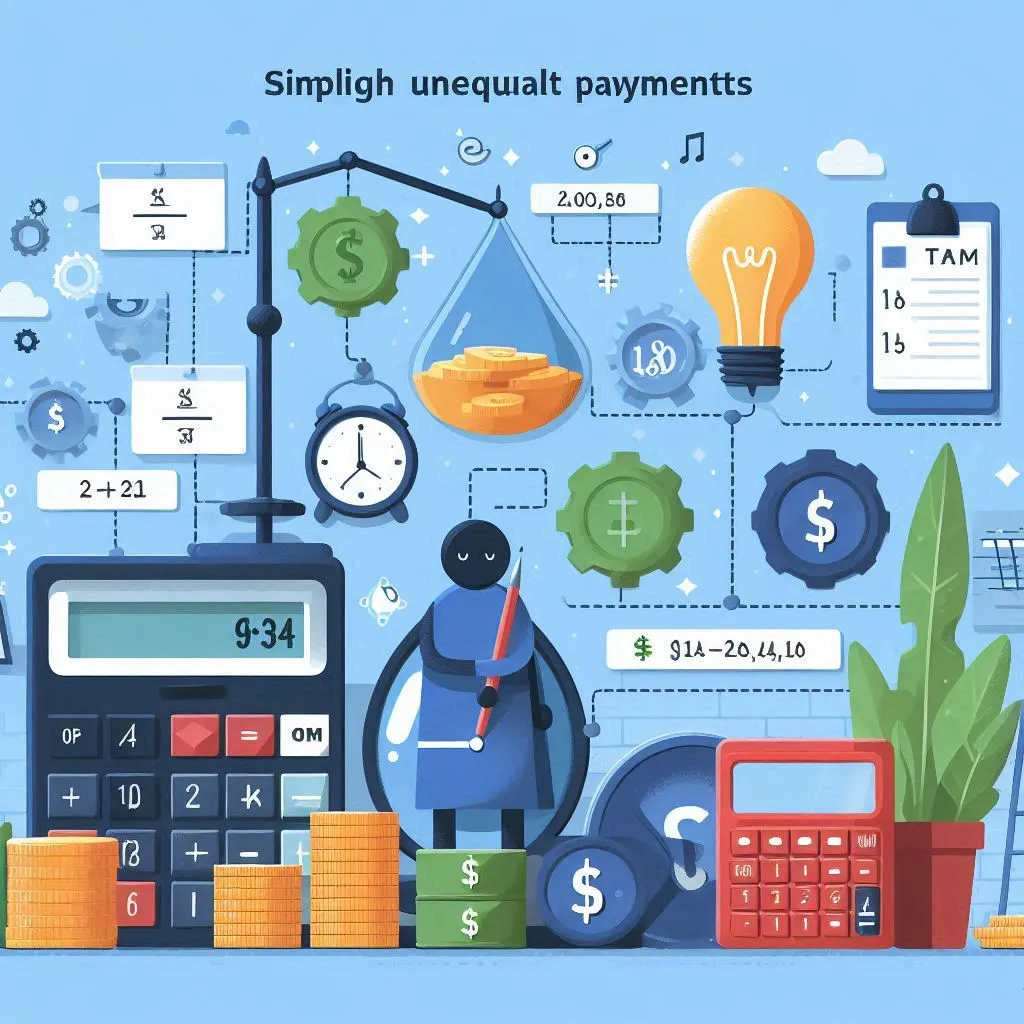- Understanding Unequal Payments
- Calculating Future Value with Unequal Payments
- Planning for Multiple Payments
- Managing Windfall Investments
- Creating Funds for Specific Withdrawals
- Depleting Funds Over Time
- Conclusion
When handling financial calculations, especially those involving unequal payments, the Time Value of Money (TVM) is essential. This concept helps us understand how money's value changes over time due to interest rates. Simplifying the calculation of these payments involves applying TVM principles in a straightforward manner.
Calculating unequal payments can be challenging due to the variations in amount and timing. The Time Value of Money (TVM) is a fundamental concept in finance that helps simplify these calculations by evaluating how money's value changes over time. When dealing with unequal payments, it’s essential to calculate the future or present value of each payment individually and then combine these values to find the total amount.
TVM allows for accurate financial planning by discounting or compounding each payment based on its timing and amount. This method ensures precise results for investments, loans, and other financial scenarios involving irregular cash flows.

For students tackling complex time value of money assignments, understanding these calculations is crucial. If you need assistance with your assignments involving unequal payments, leveraging expert help can make a significant difference. Assignment help services can guide you through the nuances of TVM, ensuring you grasp the concepts thoroughly and complete your tasks accurately. Such support is invaluable in mastering financial calculations and achieving academic success in finance-related studies.
Understanding Unequal Payments
Unequal payments are cash flows that differ in amount and timing. Unlike equal payments, which can be managed using standard annuity formulas, unequal payments require a more detailed approach. Each payment must be evaluated individually based on its timing and amount. The goal is to calculate either the future or present value of each payment and then aggregate these values.
Calculating Future Value with Unequal Payments
Consider the case where you need to invest varying amounts over time to find the total future value. Suppose you invest $3,000 today, $5,000 one year from now, and $3,000 two years from now at an annual interest rate of 7%. Each investment grows at different rates depending on when it was made.
For the $3,000 invested today, the calculation involves compounding it for three years. For the $5,000 invested one year from now, it is compounded for two years, and the $3,000 invested two years from now is compounded for one year. Adding these future values gives the total accumulated amount.
In this example, the future value of the investments totals approximately $12,609.63. This approach showcases how varying investment timings affect the final amount.
Planning for Multiple Payments
When you plan for multiple payments, such as investing $10,000 today, $10,000 at the end of year one, $12,000 at the end of year two, and $15,000 at the end of year three, each payment is compounded based on its specific timing. By calculating the future value for each payment and summing them up, you get the total value at the end of the investment period.
Using a 6% interest rate, the total future value of these investments amounts to $54,417.52. This example highlights the impact of different payment timings on the overall future value.
Managing Windfall Investments
If you receive a windfall, such as $40,000 today, and plan to add $10,000 in two years, you need to calculate how much this will grow over time. With a 4% annual interest rate, you compound the initial amount for three years and the additional amount for one year. The total future value of this investment is approximately $55,394.56, demonstrating how additional investments influence the final amount.
Creating Funds for Specific Withdrawals
In scenarios where you need to withdraw specific amounts in the future, such as $15,000 in one year and $27,000 in two years, you must determine how much to invest today. By discounting each withdrawal amount back to the present value using the 4% interest rate, you can calculate the required initial investment. The total present value needed to meet these future withdrawals is $39,386.10.
Depleting Funds Over Time
For cases where you wish to withdraw amounts like $40,000 in one year, $35,000 in two years, and $25,000 in three years, the calculation involves determining the present value required to fund these withdrawals. Using a 3% interest rate, the total present value needed is $95,255.12. This method helps in planning how much to invest initially to cover future withdrawals.
Conclusion
Simplifying the calculation of unequal payments involves understanding how each payment affects the overall value, whether you're determining future or present value. By applying Time Value of Money concepts, you can manage complex financial scenarios effectively. This approach not only aids in accurate financial planning but also helps in making informed investment decisions. For students in need of help with finance assignments, mastering these calculations will be beneficial for them . Understanding these concepts ensures you can handle varied payment structures with ease and perform well in your finance coursework.
